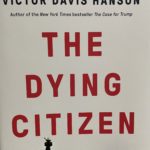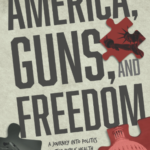Pornography Prep Schools
What did your sixth grader learn at school today? There is a good chance that she learned how to use a condom, or learned about homosexual relations from a gay activist. Or maybe it was a more innocent lesson about the importance of jihad, and how to pray to Allah. Tomorrow it might be a lesson about suicide, or a class discussion about “stupid rules at home” and parental incompetence.
The unfortunate truth, as documented in From Crayons to Condoms: The Ugly Truth about America’s Public Schools, a collection of stories compiled by Steve Baldwin and Karen Holgate, is that kids of every age are subjected to material years beyond their maturity level, ranging from merely inappropriate to blatantly obscene. This is all happening in publicly funded schools, where a child’s formative experiences are meant to occur and a love for learning is supposed to be nurtured.
Baldwin, who has been actively involved in education reform for years, explained in an interview that the problem is widespread, though it is most acute in urban areas. He strongly encourages parents who can afford it to enroll their children in private schools until changes have been made in the school systems. For most, however, public schooling is the only option.
Baldwin and Holgate have done parents nation-wide a service by compiling a collection of stories that highlight some of the horrors parents experience sending their kids to public schools. The book is a simple, and often shocking, journey through a public school system plagued by “political correctness.” The school has become an environment where activists can force their agenda on very young children, often at the expense of traditional forms of learning like spelling and math.
From Crayons to Condoms divides the horror stories into chapters by subject matter. In one section, “Schools: Scaring Kids to Death,” parents describe bizarre classroom discussions about death, murder and suicide. In at least one school, children created their own tombstones and decorated the classroom with them. At its most innocent, being surrounded by reminders of your own death creates a morbid atmosphere for learning.
Unfortunately, discussions of death often aren’t always innocent, as Joy Barron, a contributor to From Crayons to Condoms, explains. In her son’s English class, the teacher spent weeks on the topic of death and suicide. Barron writes, “How valid is it to handle psychologically sensitive subjects—such as teenage suicide—in a classroom setting by untrained professionals?” Barron’s concerns about the subject matter fell on deaf ears at her son’s school. “One week later, my son was dead. He committed suicide.”
Other parents share equally shocking, if not quite so painful, stories. Many of the stories concern psychological evaluations conducted by teachers, forcing their students to take values test and offering counseling for family problems.
Some of the material is a struggle to read because of the graphic treatment of sexuality in many classrooms. The sections discussing what children are learning about sex are at once the most disturbing and the most revealing. While reading, it is important to remember the warning offered in the book’s introduction:
“We ask that you read this book with an open mind. It is not meant to attack individuals or target specific schools; the purpose is to point out a growing trend in our nation’s education system. We also want our readers to know that we struggled with whether or not to include some of the language this book contains. Some of it is sexually graphic and very crude. However, in the end, we decided that if the material is too vulgar for parents and other adults to read, then it is much worse for our children to study in the classroom.”
The theme throughout the book is that public schools are the unfortunate victim of specific agendas. Traditional beliefs and practices are being systematically identified and attacked. Instead, “tolerance,” which has come to mean support for gays and contempt for God, has become part of the curriculum for children of all ages.
Parents should read this book. Too much is at stake to allow activists to hijack the educating of America’s young and derail their opportunity to grow up as innocents. As Baldwin and Holgate point out, the first step is to help parents realize what is happening in their child’s classroom. Next, parents can begin to take action. The book’s final chapter is a guide to what parents can do to ensure that their child is receiving a proper education. Once parents achieve a stronger classroom presence nation-wide, those with the children’s best interest at heart can begin to reverse harmful trends that are becoming more and more popular in public schools.
Daniel Allen is an intern at the American Journalism Center, a training program run by Accuracy in Media and Accuracy in Academia.




